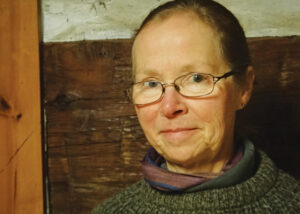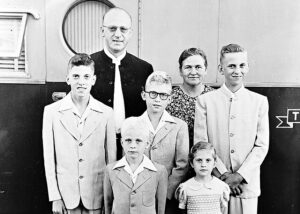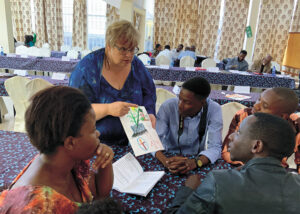“Come to the water, living water. Come to the water, come all, singing.” These are the words of Voices Together No. 35, “Come to the Water.” For its composer, Carol Ann Weaver, the experience of finding living water has not only been metaphorical but also profoundly tangible.
She explains: “In 2018, Lyle Friesen and I were in South Africa’s Kalahari Desert for 40 days and 40 nights, watching, listening to, following the birds and animals: drongos, korhaans, Marshall eagles, pied barbets, lions, brown hyenas, cheetahs, gemsboks, leopards, springboks, barking geckos and so many more. Our only audible music was that of the desert and its inhabitants, with each drop of water being crucial, life-giving. However, music ran non-stop through my head in response to the desert—sequences which were lovely but long; delightful but diverse.
“Then, at exactly one moment, as we followed a cheetah along the dry Auob River bed, all the tunes merged into one: “Come to the Water/Desert Alleluia” was born! I was filled with joy and awe, immediately sensing the song wanted to travel beyond me. In a brief flash, I even envisioned the music being sung by Mennonite congregations. Then, back to the scramble of finding where that cheetah was going!”
Weaver is professor emerita at Conrad Grebel University College, Waterloo, Ont., where she taught ethnomusicology and composition, and organized Sound in the Land conferences, which were focused on Mennonite music. Her music addresses themes of injustice and struggle, as well as hope and celebration. She has composed music based on the texts of Mennonite writers and has also written her own lyrics, as she did with “Come to the Water.”
“Come to the Water” is written with an opening “Alleluia,” to be sung by tenors and basses. Four verses follow, which are written with three soprano/alto parts (as opposed to the standard two parts) and two tenor/bass parts. Weaver has taught and led this piece frequently at her home congregation, Rockway Mennonite Church in Kitchener, Ont.
As a pedagogue and song leader, she has suggestions for how it can best be used in congregations: “I would suggest everyone starts with the opening “Alleluia” pattern, singing it repeatedly, in their own octave, letting it flow with its own South African, almost Taizé-like energy, as it represents the pulse of life. Once that is established, I would then suggest everyone sings just the melody in unison, again in their own octave. The bass part and the melody can then be brought together, with the harmonies added to allow the music to fill out and swell.
“Although a piano part is indicated, the piece is possibly best done totally a cappella [without piano]. In the many times I’ve heard South Africans singing their own traditional worship songs, it’s often outdoors or in bare-bones structures with no instruments available, nor would they need them. Voices are all they need! We Mennos haven’t invented four-part a cappella harmony!”
Weaver views the verses of “Come to the Water” as a storyline that reflects her own journey and aspirations: seeking living water, finding ways to express gratitude, releasing burdens, and “singing ‘alleluia’ for the sheer exuberance of being alive.”
For communities that sing this song in worship, she hopes they are able to identify with these sentiments and find resonance with the song.
Anneli Loepp Thiessen is a PhD candidate in interdisciplinary music research at the University of Ottawa. She is co-director of the Anabaptist Worship Network and was a committee member for Voices Together.
Read more Voices and Stories columns:
Sharing across languages
A tune finds words
Going to the mountain








Leave a Reply
You must be logged in to post a comment.